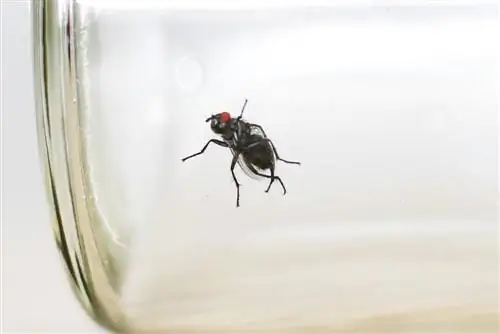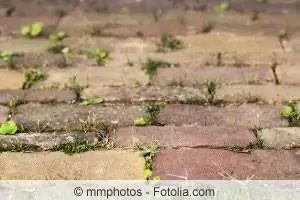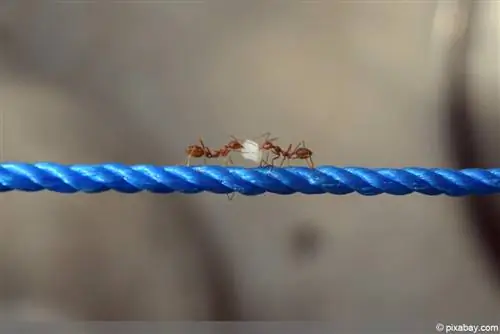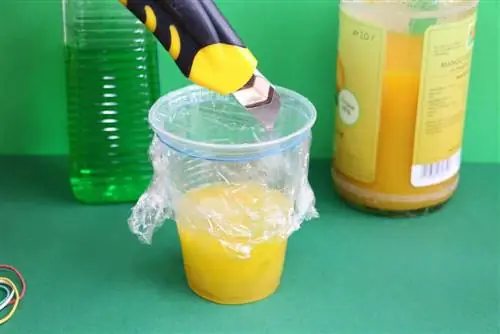- Author admin [email protected].
- Public 2023-12-17 03:39.
- Last modified 2025-01-24 12:45.
In the fight against the summer fly plague, purchased insect catchers are becoming unpopular. Smart home gardeners avoid negative side effects, such as toxic ingredients or regular costs, and simply make fly catchers themselves. These instructions explain the correct procedure and name the 15 best home remedies. Of these, 8 natural remedies transform conventional paper strips into relentless fly killers. If you don't want to condemn annoying flies to death, choose from 7 home remedies and construct an effective fly bait as a live trap. How this works will no longer remain hidden from you.
Make fly catchers out of paper
Making fly catchers yourself is easy on the wallet and allows for decorative design variations. On top of that, you know all the components and ingredients from scratch. This argument is important to many users who want to get rid of flies naturally and without poison. The following instructions explain how to make your own fly bait out of paper:
Material requirements
- absorbent paper, such as colored blotting paper
- string
- Pushtack
- Brush
- Hole Punch
- old magazine
- Home remedies (see recipe below)
The selected paper quality is crucial for smooth application. Please use paper with high absorbency. Baking paper, plastic film or other surface-treated types of paper are not suitable. Paper shopping bags are well suited for upcycling provided that they are genuine recycled paper bags. Sometimes the doors are subjected to a chemical surface treatment or contain some recycled plastic, which significantly impairs their absorbency. It is very annoying when the sticky coating from the strips constantly drips onto furniture, floors and heads.
Procedure
Take the absorbent paper in one hand. With the scissors in your other hand, cut 6 centimeter wide strips lengthwise. If you use blotting paper, you can choose from a variety of colors. By making colorful fly bait yourself, you can buffer the unsightly effect a little when numerous fly corpses accumulate over time. Punch a hole at the top of each strip of paper. Cut a 15 to 20 centimeter long piece of string and thread it through the hole. Knot the string so that you can later hang the finished fly catcher on it. Now it's time to spread the old newspaper on the table. Place a strip of paper on the base. Prepare the bowl with the home remedy, dip the brush and distribute the sticky liquid evenly.
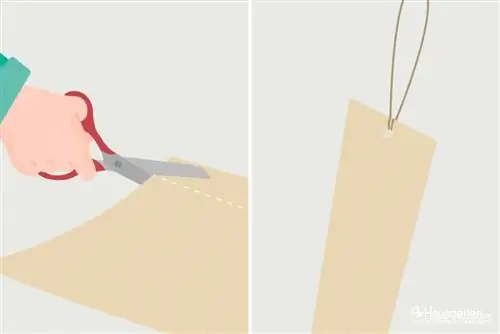
After the first coat, please wait a few minutes. Experience has shown that blotting paper absorbs the first coating almost completely. Test the stickiness with your index finger. If necessary, apply the coating agent repeatedly. Once a good adhesive strength has developed, sprinkle the strip thinly with sugar. Hang the finished fly catcher on a thumbtack. Choose a location frequented by flies, such as near windows, doors, or trash cans.
8 Home remedies for hanging fly catchers
So that colorful paper strips turn into effective fly traps, the right cover is important. The following home remedies are characterized by a combination of irresistible temptation and relentless adhesive power. From the first contact there is no escape for little fly legs:
- Maple syrup
- Honey
- Nutella
- Jam
- Sugar beet syrup
- Mixture of rosin, linseed oil and honey
- Mixture of tree resin, linseed oil and maple syrup or honey
- Mix of honey, sugar and water in equal parts
Coating paper strips is a sticky affair and not to everyone's taste. As an alternative, dip pre-cut blotting paper into viscous molasses and let everything dry. To do this, put one part each of honey, sugar and water in a small saucepan. Heat the ingredients, stirring constantly, until everything is well mixed. Now let the mixture cool down to room temperature. Now dip a strip of paper into the viscous liquid and then lay it out on baking paper to dry.
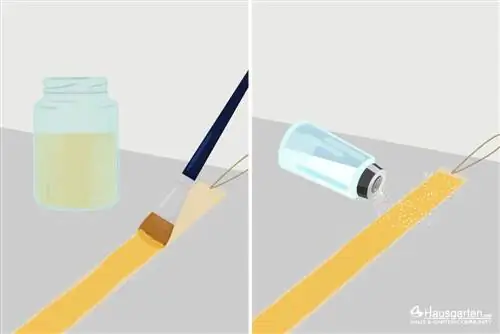
Traditionally and naturally, you can make fly glue yourself if you use rosin or tree resin as the base ingredient. Rosin is the distillation residue of natural tree resins. The natural product is well known to music lovers because it acts as a balm to refine valuable string instruments. When heated in a water bath, the product becomes viscous and can be mixed with honey and a drop of linseed oil. A similar procedure can be used with larch, pine or spruce resin.
Tip:
Take control of annoying flies with a combination of a homemade fly catcher and insect spray. A proven home remedy is high-proof alcohol, which you can purchase in drugstores and pharmacies. Fill a spray bottle with ethyl alcohol, alcohol or organic ethanol - the natural insecticide is ready.
Make your own stand-up fly bait
Hanging fly catchers are increasingly being criticized. Adhesive tape covered with dead flies dangling from the ceiling is an unsavory stab in the back for creative living space design. Furthermore, the insect-infested death strips confront nature lovers every day with a taboo violation of their ecologically responsible lifestyle. These are two convincing reasons for a standing fly bait that not only works naturally, but also as a live trap. The basic idea of the design is a container that can be set up with a seductive lure and a one-way entrance. This is how you can build your own fly trap:
Material requirements
- small, transparent container (mason jar, empty jam jar, used plastic chocolate box)
- Clear film
- Adhesive tape or rubber
- Toothpick or thick sewing needle
- Scissors, spoon, kitchen knife
- Sticky notes and pen
- Attractants (see recommendations below)
Procedure
Clean the container in advance with hot water so that previous contents do not accidentally give off a smell that is repellent to flies. The container should be visible so that you can assess the catch rate at a glance. Any existing cover is removed. Fill the bowl with one of the recommended attractants. Then cover the container tightly with cling film. For additional hold, fix the film with adhesive tape or rubber band. Finally, perforate the film with a toothpick or sewing needle. Please mark the fly trap with a sticky note and appropriate note so that other family members do not accidentally tip the container out.

The greedy tormentors squeeze through the tiny entry holes to feast on the delicious filling. However, the winged rabble have reckoned without the innkeeper, because the escape route is closed. If the expected catch rate approaches your expectations, take the trap outside. Release the flies at a sufficient distance from the house. The following lines highlight which home remedies have proven to be excellent as bait for flies.
7 Home remedies for standing fly baits
Ideal attractants for a live trap are naturally poison-free and emit a sweet or sour smell. In fact, flies are not picky, but rather enjoy eating tricks and treats equally. This fact opens up a wide range of effective attractants that you can easily make yourself in your kitchen:
- overripe, peeled pieces of fruit (apple, pineapple, orange, banana)
- Pieces of pickled gherkins
- nibbled chicken bones with leftover meat
- Fish skin or bones with leftover meat
- Wet food for dogs or cats
- crumpled kitchen paper soaked with apple cider vinegar, fruit juice or sugar water
- cotton balls soaked in mixed beer or wine
Please note that any fly bait with stagnant liquids becomes a death trap. Just a few millimeters are enough and the insects drown miserably in it. So that trapped flies can fly away again outdoors, the filling should have a solid consistency and not a liquid surface.
Note:
The cultivation of carnivorous plants only makes a marginal contribution to combating the summer fly plague. Venus traps, sundews and other carnivores do catch one or two flies. The low catch rate does not save long-suffering home gardeners from having to make a whole battalion of fly bait themselves to deal with the summer plague.

